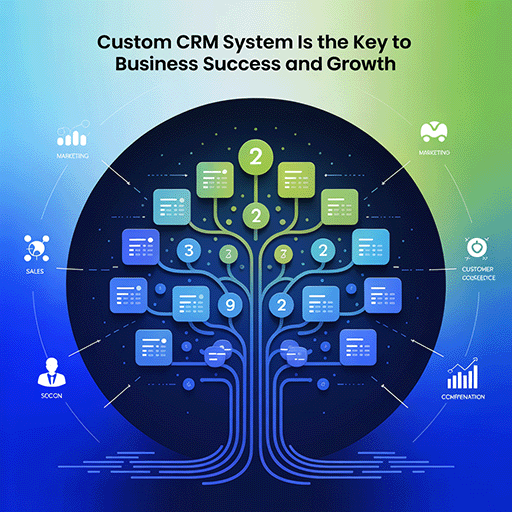What if your financial institution could slash fraud losses by 30% or predict market shifts with 95% accuracy? Machine learning is turning this vision into reality for finance leaders worldwide.
ML-driven fraud detection can save banks over $10 billion, while algorithmic trading powered by AI delivered returns 15% higher than traditional methods, according to PwC. We see a rapid growth of AI and machine learning in finance institutions, and the reason for this is clear—profitability.
In this guide, we’ll walk you through the top trends and applications reshaping the financial landscape—plus the challenges you’ll need to tackle to stay ahead in this fast-evolving space.
The Rise of Machine Learning in Finance
Machine learning has transformed finance over the past decade. Initially, it was used for automation and data analysis, but now it’s vital for fraud detection, customer service, and risk management.
Three key reasons make machine learning essential in finance: it enhances data analysis, automates tasks, and predicts risks and trends. These capabilities help financial institutions make informed decisions, increase efficiency, and reduce errors.
Essential ML Technologies
Several machine learning technologies have contributed greatly to the transformation of the finance sector. Some of the key technologies are:
-
Deep Learning: Deep learning in finance has changed how machines learn, comprehend, and interact with complex data. Essentially, it enables computers to autonomously identify patterns and make decisions from huge amounts of unstructured data. It is especially useful in complex jobs such as market predictions, natural language processing, and image recognition.
-
Neural Networks: Neural networks are capable of recognizing patterns in large datasets. In fact, they are the backbone of several machine learning finance applications, including fraud detection and credit scoring.
-
Reinforcement Learning: This kind of machine learning is focused on decision-making by learning from the results of previous actions. It is usually used in algorithmic trading, where the aim is to increase returns by making informed trading decisions.
Key Applications of Machine Learning in Finance
Now that you are aware of the emerging trends of ML in finance, let’s explore its applications, highlighting the challenges and benefits of ML for business. Furthermore, we will also share a case study for a better understanding.

Application 1: Algorithmic Trading
Algorithmic trading is the use of algorithms to make better trade decisions. Generally, traders form mathematical models that monitor trade activities and business news in real time to identify any aspects that may lead to a rise or fall in security prices. ML models interpret huge amounts of data to recognize patterns and make trading decisions. The benefits of ML for algorithmic trading include:
-
Analyzing large datasets simultaneously
-
Faster information processing
-
Reduced human error
-
Improved trading strategies
-
Optimized trading returns
However, algorithmic trading also poses a few challenges, such as:
-
Difficulty in interpretation due to model complexity
-
Accountability and transparency issues
-
Market unpredictability
-
Ethical issues
Among the most successful machine learning use cases in finance is that of Renaissance Technologies’ Medallion Fund. It uses ML for algorithm trading, attaining an average return of 66% annually from 1988 to 2018. The fund’s success implies the potential of ML to transform the finance industry.
Application 2: Fraud Detection and Prevention
Today, most businesses leverage ML to flag and fight fraudulent financial transactions. ML operates by scanning vast amounts of data to identify specific anomalies or activities and flags them for continued investigation by companies. Thus, machine learning allows real-time analysis of transactions and consumer behavior. Some of the key advantages of ML in fraud detection and prevention are:
-
Improved security
-
Decreased financial losses
-
Instant identification of fraudulent activities
-
Maintaining customer trust due to protection from unauthorized transactions
-
Reduced number of false positives
The major challenges that companies may have to face because of artificial intelligence applications in finance with regard to fraud detection and prevention:
-
A balance between sensitivity and accuracy
-
Flagging legitimate transactions as fraudulent
-
Less sensitive models miss fraud
-
Staying updated with evolving fraudulent tactics
PayPal, a global leader in online payments, uses machine learning to detect and prevent fraud and analyze transaction data in real time. Over time, it has substantially reduced fraud, protecting its users and improving security across the platform.
Application 3: Credit Scoring and Risk Assessment
Machine learning has changed risk assessment and credit scoring by allowing more accurate predictions of a person’s creditworthiness. Conventional methods were focused on income and credit history. However, machine learning finance projects involve the analysis of alternative data sources such as transaction history and social media activity to evaluate risk. The key benefits of using machine learning for credit scoring and risk assessment include:
-
Accurate risk predictions
-
Faster loan approvals
-
Better risk management
-
More inclusive and fairer lending practices
-
Expanded access to credit
Some of the challenges that this use may result in are related to:
-
Regulatory compliance
-
Model fairness
-
Data privacy
Zest AI, a venture specialized in ML-driven credit scoring, has helped lenders enhance their credit decision processes. Through the use of ML for analyzing large data, Zest AI models have allowed lenders to approve more loans while reducing or maintaining risk levels.

Application 4: Customer Service and Chatbots
ML-powered chatbots are becoming increasingly popular due to their ability to provide customer service around the clock. Moreover, they can simultaneously handle numerous customer inquiries, from basic account information to difficult financial advice. That’s not all — there are numerous benefits of using ML-powered chatbots in finance, which include:
-
Improved customer experience and satisfaction
-
Reduced operational costs
-
Lesser resources and time
-
Improved operational efficiency
-
Personalized financial advice
ML-driven chatbots face challenges like:
-
Maintaining human-like interaction (engaging and empathetic)
-
Handling complex inquires
-
Data privacy
Erica, Bank of America’s chatbot, is among the best machine learning use cases in banking. Erica offers customized financial advice, answers customer queries, and assists with transactions.
Application 5: Portfolio Management
Another common application of machine learning is in portfolio management due to its ability to optimize investment strategies and increase returns. Machine learning algorithms interpret large amounts of market data, including financial statements, economic indicators, and historical trends, to anticipate future asset performance.
Using machine learning for portfolio management has several pros:
-
Improved returns
-
Minimized risk
-
Dynamic rebalancing
-
Personalized investment strategies
ML-driven portfolio management faces issues like:
-
User trust
-
Model reliability
-
Market volatility
-
Unpredictability of financial markets
Wealthfront, a robo-advisor, utilizes machine learning algorithms to manage its clients’ investment portfolios. The platform automatically rebalances portfolios and maximizes tax efficiency, leading to strong returns without human intervention.

Application 6: Customer Lifetime Value (CLV) Prediction
ML-powered tools for predicting customer lifetime value are gaining traction in finance due to their ability to analyze vast datasets and forecast client profitability with precision.
Moreover, they can identify high-value customers by processing transaction histories, spending habits, and even behavioral cues in real time. There are numerous benefits of using machine learning for CLV prediction in finance, which include:
- Enhanced customer retention strategies
- Optimized marketing spending on high-value clients
- Increased revenue through targeted offers
- Better resource allocation
- Personalized product recommendations
ML-driven CLV prediction faces challenges like:
- Integrating diverse data sources (e.g., social media, transactions)
- Ensuring predictive accuracy over time
- Balancing privacy with personalization
Chime, a leading fintech platform, is among the best financial machine learning use cases in this space. Chime leverages ML to predict CLV, tailoring savings plans and nudging users toward smarter financial decisions.
Application 7: Regulatory Compliance Automation
ML-powered regulatory compliance automation is becoming increasingly popular due to its ability to monitor transactions and ensure adherence to complex laws in real time.
Besides, it can process millions of data points simultaneously, spotting risks like money laundering or fraud faster than human teams ever could. Indeed, there are multiple benefits of machine learning applied to finance for compliance automation, such as:
- Reduced compliance costs;
- Faster audit preparation
- Fewer errors in reporting
- Enhanced risk detection
- Scalability across global regulations
Among the challenges of ML-driven compliance automation are:
- Adapting to rapidly changing regulations
- Interpreting ambiguous legal requirements
- Securing sensitive financial data
HSBC’s compliance system is a compelling application of machine learning in finance. HSBC uses ML to scan transactions, flag suspicious activities, and streamline AML and KYC processes with unmatched efficiency.
Key Trends in Machine Learning for Finance in 2025
In this section, we explore the top trends in machine learning for finance in 2025, providing an overview of each trend and delving into their impacts.
Trend 1: Explainable AI (XAI) in Finance
With the increasing sophistication of ML in finance, the need for interpretability and transparency has risen. Explainable AI or XAI addresses the challenge by making machine learning models more understandable to humans. In the financial landscape, where decisions have far-reaching consequences, it is extremely important for stakeholders – including customers, investors, and regulators – to understand why and how the models make certain decisions.
XAI adoption in finance is driven by regulatory necessities and the requirement to build trust in decisions that artificial intelligence drives. XAI aids financial institutions in meeting these requirements by offering insights into how decisions are made. This makes it simpler to recognize and address any potential errors or biases. Hence, this trend is especially crucial in areas such as credit scoring, where biased decisions can have a huge impact.
Trend 2: Real-Time Data Processing and Analysis
Among the most significant trends of 2025 is the shift towards real-time data analysis and processing using machine learning. As markets become increasingly dynamic and data streams augment in complexity and volume, the potential to process and analyze data in real time has become highly beneficial.
When it comes to the impact of this trend, ML contributes significantly to real-time analytics by automating large dataset analysis and offering instant insights. This ability is vital in domains such as trading, where decisions of split-second matter can have a huge impact on profits. It is also beneficial for fraud detection and risk management since institutions can identify any suspicious activities or risks the moment they occur and respond accordingly.
Trend 3: Ethical AI and Bias Mitigation
With the rising use of machine learning in banking and finance, concerns regarding ethics and biases in ML models have risen. In 2025, there is an increasing need to ensure that these models are accountable, transparent, and fair. Thus, bias mitigation and ethical AI have taken the topmost position in the priorities of financial institutions.
As a result of this trend, it is necessary to develop ML models that are both equitable and accurate. This calls for ongoing monitoring and adjustment of algorithms to ensure they do not exacerbate or perpetuate current biases. Financial institutions have also started to adopt ethical AI frameworks to navigate the development and deployment of machine learning systems while ensuring they align with regulatory standards and societal values.

Trend 4: ML-Driven Personalization
Personalized financial products provide companies with a competitive edge. Today, customers expect products and services related to the financial sector to be customized to their unique preferences and needs. Machine learning applications in finance allow such customization by analyzing customers’ data and anticipating their preferences and behavior.
ML is enabling hyper-personalization in financial services, which has further increased the technology’s adoption across the industry. From customized loan offers to tailored investment advice, ML is allowing businesses to deliver more engaging and relevant experiences to their users. The trend drives business growth and enhances customer satisfaction, resulting in customer retention and loyalty.
Trend 5: Integration of ML with Blockchain
The intersection of machine learning with blockchain technologies is an emerging trend this year, particularly in the finance sector. The secure and decentralized nature of blockchain complements ML by offering a trustworthy environment for processing transactions and sharing data.
Such an integration is further expected to improve the efficiency, transparency, and security of financial transactions. Machine learning can be utilized to analyze blockchain data and recognize anomalies and patterns that may imply fraudulent activity. Furthermore, convergence can help streamline processes such as smart contracts, improving reliability and efficiency.
Trend 6: Hyper-Personalized Financial Products
Personalization is a must in finance, and generative AI is pushing it to new heights. This trend sees machine learning models, powered by advanced generative algorithms, crafting hyper-tailored financial products like bespoke investment plans, dynamic insurance policies, or real-time credit offers.
An Accenture report estimates that firms using generative AI for personalization can achieve a 25% revenue boost. Take Nubank, a fintech leader, which uses ML to analyze user behavior and instantly adjust credit limits—delivering what customers need before they even ask.
In a crowded market, hyper-personalization sets firms apart, meeting rising consumer demand for services that feel uniquely “theirs” while driving engagement and loyalty.
Trend 7: Quantum Machine Learning on the Horizon
The next frontier in finance? Quantum machine learning (QML). By harnessing quantum computing’s power, ML algorithms can process complex datasets—like global market trends or portfolio optimizations—at speeds unimaginable today.
While still in their infancy, JPMorgan Chase and Goldman Sachs are piloting quantum ML projects. Early tests showed that QML is much faster at analyzing risk scenarios than classical models. This trend promises to redefine high-frequency trading and risk management as quantum tech matures.
As competition heats up, quantum ML could give early adopters an unbeatable edge in predictive accuracy and efficiency.
Challenges and Considerations for ML in Finance
Using machine learning in finance has numerous benefits. Nonetheless, it also has its challenges.
“Most failures in financial ML projects trace back to poor data foundations. Choosing the right data provider is not a procurement decision—it’s a strategic one. Without fresh, comprehensive and scalable external data, even the most advanced models can deliver misleading results” says Laurynas Gruzinskas, Head of Product at Coresignal, a leading B2B data provider.
Below, we focus on some challenges and considerations for using ML in this industry to ensure successful implementation.
-
Data Quality and Availability: First and foremost, the effectiveness and accuracy of ML models are heavily dependent on the quality of data they are trained on. In the finance industry, this implies access to large volumes of financial data for machine learning that are updated, clean, and relevant. Poor data quality or insufficient data can lead to inaccurate predictions and financial losses.
-
Regulatory Compliance: Implementing ML solutions implies the need to carefully navigate complex regulatory frameworks to ensure compliance with laws regarding consumer protection, anti-money laundering, and data privacy. Non-compliance may result in damage to the company’s reputation and legal penalties.
-
Ethical Considerations: When it comes to finance, ML services must ensure fairness, transparency, and accountability. Bias in these models can result in unfair treatment of specific groups. Thus, ML models must be explainable and free from bias.
-
Scalability and Integration: Scaling machine learning models to handle extensive, dynamic data is challenging. Also, integrating the models into current financial systems implies compatibility, performance, and security considerations to ensure hassle-free functioning without disrupting any financial activities.
Final Verdict
The use of machine learning in the finance industry will deepen, leading to a more efficient, innovative financial world. The applications of ML in finance, such as algorithmic trading, fraud detection and prevention, and portfolio management, will augment the adoption of machine learning by financial institutions due to their numerous benefits and key trends like XAI, ML-driven personalization, and integration of ML with blockchain will further evolve with time.
To continue to be successful, fintech companies must stay up-to-date with market trends. Now is the time to adopt ML technologies for your business to improve efficiency and reduce operational costs.
Contact LITSLINK today. We’ll help you explore the advantages of machine learning to gain a competitive edge.





